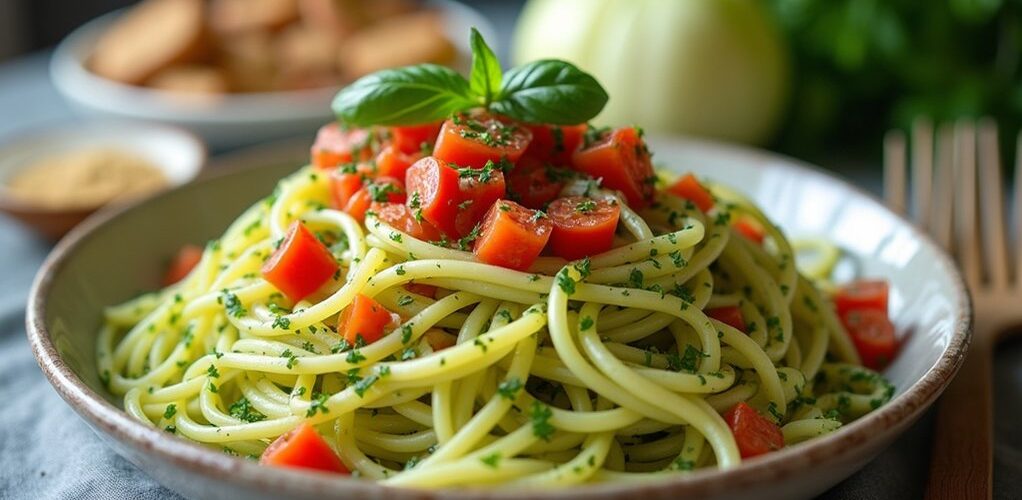
Several low-carb pasta alternatives offer nutritious options for health-conscious diners. Shirataki noodles, made from konjac flour, contain only 3 grams of carbs per serving, while spiralized vegetables like zucchini provide 4 grams per serving. Hearts of palm noodles offer another viable option with just 4 grams of carbs and 20 calories per serving. Plant-based alternatives, including chickpea and lentil pasta, deliver higher protein content while maintaining lower carb counts than traditional wheat pasta. Understanding these options opens doors to creative, healthy meal planning.
Key Takeaways
- Shirataki noodles made from konjac flour contain only 3 grams of carbs per serving and are high in fiber.
- Zucchini noodles (zoodles) and other spiralized vegetables offer a fresh alternative with just 4 grams of carbs per serving.
- Hearts of palm noodles provide a gluten-free option with 4 grams of carbs and only 20 calories per serving.
- Chickpea and lentil-based pasta alternatives offer higher protein content while maintaining lower carbs than traditional wheat pasta.
- Vegetable-based alternatives like spaghetti squash and eggplant noodles provide nutrient-rich, low-carb options for pasta dishes.
Understanding the Need for Low-Carb Pasta Options
As dietary preferences and health concerns continue to shape modern eating habits, the demand for low-carb pasta alternatives has grown considerably in recent years. This surge reflects a growing awareness of the impact that traditional pasta, high in carbohydrates, can have on health conditions such as diabetes and gluten intolerance. The shift to low carb pasta options provides individuals with versatile, low calorie alternatives that maintain the enjoyment of pasta dishes while supporting specific dietary requirements. These gluten- and grain-free alternatives offer significant nutritional benefits, including higher fiber content and fewer carbohydrates per serving, typically under 5 grams. This makes them particularly attractive for those managing their weight or seeking to improve their overall health while still enjoying familiar pasta-based meals. A variety of vegetable-based pasta alternatives, like zucchini noodles and spaghetti squash, further enhance dietary diversity and nutritional intake.
Traditional Shirataki and Konjac Noodles
Among the most innovative and effective low-carb pasta alternatives, shirataki and konjac noodles stand out for their remarkably low carbohydrate content and versatile nature. Made from konjac flour, these noodles contain only 3 grams of carbohydrates per 4-ounce serving, while providing substantial glucomannan fiber that promotes satiety and digestive health. Available in various styles, including tofu-enhanced varieties for added protein, shirataki noodles offer convenience through their pre-cooked format and quick preparation time.
| Feature | Traditional Pasta | Shirataki Noodles |
|---|---|---|
| Carbs per serving | 42g | 3g |
| Prep time | 8-12 minutes | 2-3 minutes |
| Fiber content | Low | Very high |
These low-carb pasta alternatives accommodate diverse dietary needs while maintaining the versatility of traditional pasta, making them an excellent choice for health-conscious individuals seeking to reduce their carbohydrate intake.
Spiralized Vegetable Pasta Alternatives
While traditional pasta alternatives often rely on processed ingredients, spiralized vegetable pasta offers a fresh, whole-food approach to low-carb eating. Zoodles, made from spiralized zucchini, contain only 4 grams of carbohydrates per 6-ounce serving, making them an excellent choice for carb-conscious individuals. Beyond zucchini, creative options like spiralized cabbage and eggplant provide variety while maintaining minimal carbohydrate content. These vegetables can be quickly transformed into pasta-like textures through simple cooking methods such as boiling or sautéing. The versatility of spiralized vegetable pasta allows for endless meal possibilities, as these alternatives pair well with various sauces while providing essential nutrients, fiber, vitamins, and minerals. Their minimally processed nature guarantees consumers receive maximum nutritional benefits without unwanted additives. Incorporating non-starchy vegetables like spiralized zucchini and cabbage can enhance a keto-friendly meal plan by providing essential vitamins and minerals while keeping carb counts low.
Hearts of Palm as a Pasta Substitute
Hearts of palm noodles represent a remarkable innovation in the world of low-carb pasta alternatives, offering a unique solution for those seeking to reduce their carbohydrate intake.
These versatile noodles, crafted from palm tree cores, deliver an artichoke-like flavor while containing just 4 grams of carbohydrates per 3-ounce serving.
Key benefits of hearts of palm as pasta alternatives include:
- Only 20 calories per serving, supporting weight management goals
- Gluten-free composition, suitable for those with dietary restrictions
- Versatile preparation options, from raw to lightly cooked
As a single-ingredient pasta substitute, hearts of palm noodles provide a nutritious base for meals, though they should be complemented with protein and healthy fats for ideal nutrition.
Their authentic texture and minimal carbohydrate content make them an excellent choice for health-conscious individuals.
Plant-Based Legume Pasta Varieties
Plant-based legume pasta varieties have revolutionized the low-carb pasta market by offering nutrient-dense alternatives that closely mimic traditional wheat pasta. Products like Banza Chickpea Spaghetti and O Organics Red Lentil Penne provide substantial protein and fiber while maintaining lower carbohydrate counts than conventional pasta. These gluten-free options cater to various dietary preferences and restrictions while delivering essential nutrients. Many keto dieters find edamame to be a valuable addition to their meals, providing a complete protein profile and essential nutrients.
| Product Type | Protein Content | Carb Content | Key Benefits |
|---|---|---|---|
| Chickpea Spaghetti | 5g per 2oz | 45g per 2oz | High protein |
| Red Lentil Penne | Moderate | Lower than wheat | Great taste |
| Green Lentil Pasta | High | Moderate-High | Organic ingredients |
| Traditional Wheat | Low | High | Standard option |
These alternatives maintain the familiar pasta experience while offering improved nutritional profiles, making them suitable for health-conscious consumers seeking to reduce their carbohydrate intake.
Grain-Free Alternative Pasta Products
Modern grain-free pasta alternatives have emerged as innovative solutions for health-conscious consumers seeking to reduce their carbohydrate intake without sacrificing the comfort of traditional pasta dishes.
Innovative pasta alternatives now allow health-minded individuals to enjoy traditional comfort foods while maintaining their low-carb lifestyle goals.
These low carb options provide diverse textures and nutritional profiles, with many being high in fiber and protein. The market now offers several compelling grain-free alternative pasta products that cater to various dietary needs:
- Slendier Konjac products contain only 10 calories per 100g and are rich in glucomannan fiber, making them ideal for weight management.
- Hearts of palm pasta offers a ready-to-eat, single-ingredient option that provides a unique texture alternative.
- Shirataki noodles come in multiple styles and contain just 3 grams of carbohydrates per 4-ounce serving, while delivering substantial fiber content.
Preparing and Cooking Low-Carb Pasta
Successful preparation of low-carb pasta alternatives requires specific techniques and careful attention to cooking times to achieve the desired texture and taste.
When preparing konjac-based options like shirataki noodles, thorough rinsing is essential to eliminate any unwanted odors and improve palatability.
Zucchini noodles benefit from brief cooking times of 1-2 minutes to maintain their structural integrity, while spaghetti squash needs proper baking and careful strand separation with a fork.
Hearts of palm noodles offer convenience through minimal preparation requirements, often needing just a quick sauté.
For ideal results with any low-carb pasta alternative, combining them with substantial sauces and protein sources helps create satisfying meals while enhancing the nutritional profile of the dish.
Incorporating avocados into your meals can add healthy fats to balance the nutritional content and promote satiety.
Sauce Pairings for Low-Carb Pasta Options
When exploring sauce options for low-carb pasta alternatives, traditional favorites can be adapted to complement these healthier noodle choices.
Marinara and pesto sauces enhance the subtle flavors of vegetable-based alternatives. Cream-based sauces, particularly those incorporating protein and vegetables, offer satisfying options while maintaining the low-carb profile of dishes made with konjac or chickpea pasta. Mediterranean-inspired combinations featuring olive oil, lemon, and fresh herbs provide light yet flavorful pairings that work especially well with hearts of palm noodles and other plant-based pasta alternatives.
For those following a ketogenic diet, consider using sauces sweetened with keto-friendly sweeteners, such as stevia or erythritol, to maintain ketosis while enjoying a hint of sweetness in your pasta dishes.
Classic Sauce Adaptations
Making the switch to low-carb pasta alternatives doesn't mean sacrificing the rich, satisfying flavors of traditional Italian sauces. Classic sauces can be expertly adapted to complement various low-carb pasta options, creating delicious and health-conscious pasta dishes.
Several sauce pairings have proven particularly successful with low-carb alternatives:
- Marinara and pesto sauces enhance the natural flavors of zucchini noodles and shirataki noodles.
- Creamy Alfredo and carbonara sauces blend seamlessly with hearts of palm noodles.
- Hearty meat sauces, like Bolognese, pair exceptionally well with spaghetti squash.
When adapting classic sauces, consider the texture and absorption properties of each pasta alternative. For instance, tofu shirataki noodles excel with lighter sauces, while chickpea-based options can handle more robust, vegetable-rich sauces without becoming overwhelmed.
Healthier Cream-Based Options
Traditional cream-based sauces undergo a healthy transformation when paired with low-carb pasta alternatives, offering rich and satisfying flavors without compromising dietary goals.
Lighter options, including half-and-half and coconut cream, provide the desired creaminess while maintaining lower calorie counts. These sauces work exceptionally well with zucchini noodles and shirataki noodles, as their mild flavors complement the rich textures perfectly.
To enhance nutritional value, incorporating protein-rich ingredients like grilled chicken or shrimp creates a more balanced meal.
Additionally, blending cauliflower into cream-based sauces offers a healthier alternative that maintains the desired consistency. Adding vegetables such as spinach and mushrooms not only increases fiber content but also creates a more nutrient-dense sauce that pairs harmoniously with various low-carb pasta options.
Light Mediterranean Pairings
Mediterranean-inspired sauces offer vibrant, health-conscious pairings for low-carb pasta alternatives while maintaining authentic flavors and textures. Several options provide considerably fewer carbohydrates than regular pasta while complementing light Mediterranean sauces perfectly.
- Shirataki noodles, containing just 3 grams of carbs per serving, excel with lemon-olive oil or fresh tomato basil combinations.
- Zucchini noodles shine when paired with garlic, roasted red peppers, and crumbled feta cheese.
- Hearts of palm noodles create an elegant dish when tossed with classic basil pesto.
For those seeking higher protein content, chickpea-based pasta varieties offer a middle ground between traditional and low-carb options, though with slightly higher carbohydrate content.
These alternatives can be enhanced with Mediterranean olive tapenades or fresh herb-based sauces for maximum flavor impact.
Nutritional Comparison of Pasta Alternatives
Among popular low-carb pasta alternatives, shirataki noodles emerge as the lowest-carb option with just 3 grams per serving, while both zucchini noodles and hearts of palm noodles contain 4 grams of carbohydrates per serving.
Protein content varies greatly, with Banza chickpea pasta offering the highest protein value but also carrying a substantially higher carbohydrate load at 45 grams per serving.
The calorie density of these alternatives ranges from very low in shirataki and vegetable-based options to moderate in legume-based alternatives, making them suitable for different dietary goals and restrictions.
Carb Content Per Serving
Various low-carb pasta alternatives offer significant carbohydrate reductions compared to traditional wheat pasta, with options ranging from 3 to 45 grams per serving.
When examining carb content per serving, several alternatives stand out for their minimal impact on daily carbohydrate intake:
- Shirataki noodles lead the pack with just 3 grams of carbs per 4-ounce serving
- Zucchini noodles and hearts of palm both contain approximately 4 grams per serving
- Spaghetti squash provides similar low-carb benefits while offering unique texture
For those seeking higher protein content, Banza chickpea spaghetti contains 45 grams of carbs per serving, still offering advantages over regular spaghetti through its enhanced nutritional profile.
These alternatives provide flexibility for those monitoring their carbohydrate intake while maintaining the enjoyment of pasta-style dishes.
Protein and Fiber Values
A thorough analysis of protein and fiber content reveals significant nutritional differences among pasta alternatives. Shirataki noodles stand out with their high fiber content and minimal carbohydrates, making them an excellent choice for low-carb diets.
Hearts of palm noodles and zucchini noodles offer moderate fiber levels while maintaining minimal carbohydrate content.
In contrast, Banza chickpea spaghetti provides a substantial protein boost of 5 grams per serving, though its higher carbohydrate content makes it less suitable for strict low-carb diets. Jovial organic brown rice penne matches the protein content of chickpea pasta but similarly contains higher carbohydrates.
For those prioritizing fiber intake and minimal carbs, vegetable-based alternatives like shirataki, zoodles, and hearts of palm noodles emerge as the most beneficial options.
Calorie Density Breakdown
Examining the calorie density of pasta alternatives reveals striking differences in their nutritional profiles.
When comparing these options, shirataki noodles emerge as the most calorie-efficient low-calorie pasta alternative, containing just 10 calories per serving. Other alternatives offer varying caloric values while maintaining good amounts of fiber and versatility in pasta shapes.
- Shirataki and zucchini noodles represent the lowest calorie options, with 10 and 20 calories per serving respectively.
- Hearts of palm noodles occupy the middle ground at 30 calories per serving, while spaghetti squash contains 42 calories.
- Banza chickpea pasta, though higher in calories at 210 per serving, provides substantial nutritional benefits through increased protein content.
These alternatives demonstrate how different ingredients can create pasta-like experiences while greatly reducing calorie intake compared to traditional wheat pasta.
Frequently Asked Questions
What Is a Good Low Carb Pasta Alternative?
Several low-carb pasta alternatives exist, including zucchini noodles which can be spiralized fresh, quinoa pasta offering protein benefits, and cauliflower rice that provides a grain-free base for traditional pasta dishes.
What Kind of Pasta Can I Eat on a Low Carb Diet?
Several low carb options include shirataki noodles, zucchini noodles, hearts of palm pasta, and spaghetti squash. These pasta substitutes require minimal meal preparation while maintaining considerably lower carbohydrate counts than traditional pasta.
What Is the Healthiest Pasta for Weight Loss?
Zucchini noodles offer superior health benefits for weight loss, combining minimal calories with high nutrient density. Proper portion control of shirataki or hearts of palm noodles supports effective meal planning.
What Is a Diabetic Friendly Pasta Alternative?
Diabetic pasta options include shirataki noodles, zucchini noodles, and hearts of palm pasta. These low glycemic pasta alternatives contain minimal carbohydrates and fiber-rich nutrients, making them ideal healthy noodle substitutes.
Conclusion
The growing variety of low-carb pasta alternatives offers compelling options for health-conscious consumers seeking to reduce their carbohydrate intake while maintaining the pleasure of pasta dishes. From traditional shirataki noodles to innovative vegetable-based solutions and legume pasta varieties, these alternatives provide diverse textures, flavors, and nutritional profiles. With proper preparation techniques and compatible sauce pairings, these substitutes can seamlessly integrate into a balanced, lower-carb lifestyle without sacrificing taste or satisfaction.
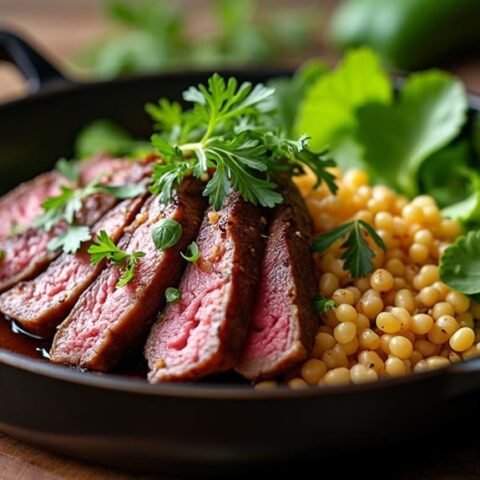

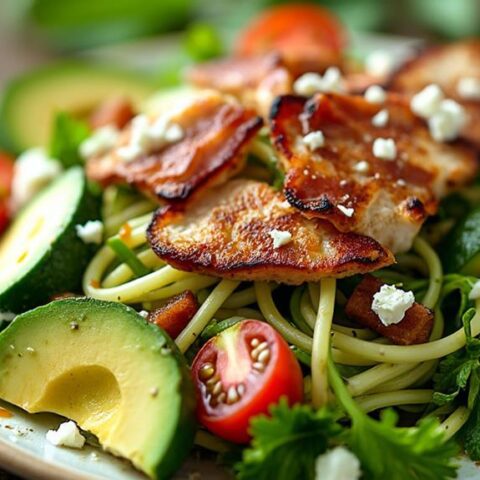

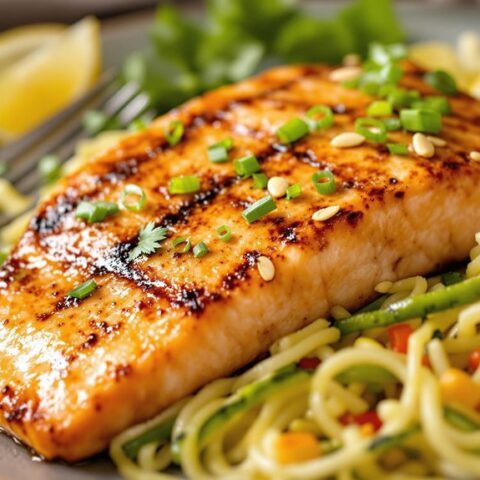
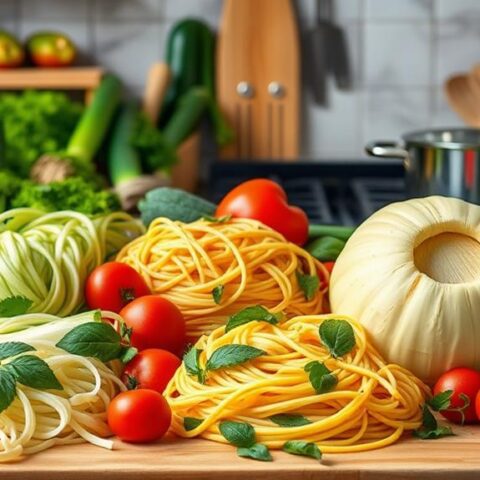
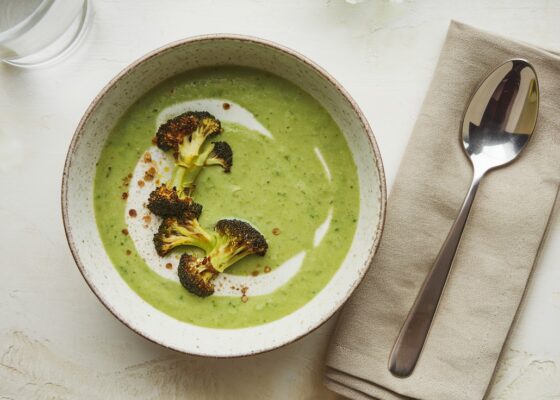



No Comments